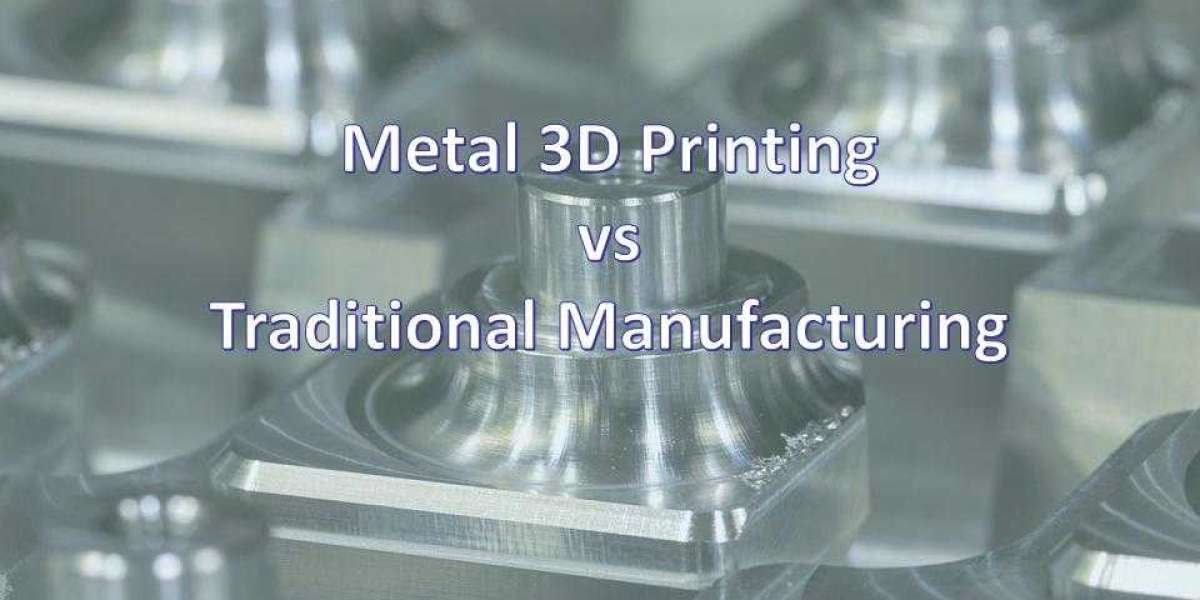In the ever-evolving world of manufacturing, new technologies are reshaping how products are made, tested, and delivered to consumers. One of the most prominent innovations is 3D printing, also known as additive manufacturing, which has gained significant traction across industries for its flexibility and ability to produce highly customized products. On the other hand, conventional manufacturing methods, such as injection molding, machining, and casting, have been the backbone of industrial production for decades. While both 3D printing and conventional manufacturing have their own merits, understanding the strengths and limitations of each can help businesses decide which method best suits their production needs.
In this article, we will compare 3D printing and traditional manufacturing in terms of their processes, benefits, costs, and ideal applications.
Understanding 3D Printing and Conventional Manufacturing
What is 3D Printing?
3D printing is an additive manufacturing process, which means it creates objects layer by layer from a digital design. The digital file, often created using computer-aided design (CAD) software, is converted into thin cross-sectional layers. The printer then deposits the chosen material (e.g., plastic, metal, or resin) precisely on top of these layers, building the object from the ground up. The advantages of 3D printing include its ability to produce highly complex and customized parts without the need for specialized molds or tools.
3D printing is commonly used for rapid prototyping, low-volume production, and highly customized parts, such as medical devices or parts with intricate geometries. It’s also increasingly used for spare parts, jewelry design, and aerospace components.
What is Conventional Manufacturing?
Conventional manufacturing encompasses a broad range of subtractive or formative processes that have been used for centuries. In subtractive manufacturing, raw materials such as metals or plastics are shaped by cutting, grinding, or milling to create the desired part. Examples include CNC machining, lathe work, and milling.
In formative manufacturing, such as casting or injection molding, the material is poured or injected into molds to form the desired shape. These processes are efficient for producing large quantities of parts with uniform dimensions.
Traditional manufacturing is widely used in industries requiring high-volume production, such as automotive, consumer electronics, and appliance manufacturing.
Key Differences Between 3D Printing and Conventional Manufacturing
1. Production Process
3D Printing: The 3D printing process is additive, meaning material is added layer by layer. This allows for high design flexibility, as it’s possible to create highly complex and intricate shapes that might be difficult or impossible to achieve with traditional methods. For example, 3D printing can create hollow structures, internal channels, and complex geometries without the need for additional tools or molds.
Conventional Manufacturing: Traditional manufacturing is typically subtractive or formative. Subtractive methods like CNC machining and milling involve removing material from a solid block to achieve the final shape. Formative methods such as injection molding and casting shape the material by injecting it into molds or using force. These processes can be highly efficient for producing large quantities of standardized parts.
2. Material Efficiency
3D Printing: One of the major benefits of 3D printing is material efficiency. Since the material is only deposited where it is needed, there is minimal waste. This can be particularly advantageous when working with expensive materials or in industries where reducing waste is a priority.
Conventional Manufacturing: Traditional manufacturing processes can produce significant material waste, especially in subtractive processes. In CNC machining, for example, much of the original material is removed and discarded as waste. While certain formative processes like injection molding can be more efficient, there is still waste in the form of sprues, runners, and rejected parts.
3. Complexity and Customization
3D Printing: 3D printing excels in creating complex and customized parts. With no need for tooling or molds, 3D printing allows for the production of parts with complex internal structures, organic shapes, and customized features. This makes it ideal for industries that require highly specialized products or frequent design changes.
Conventional Manufacturing: While traditional methods can produce relatively complex shapes, they are generally less flexible than 3D printing when it comes to customization. Producing complex shapes often requires specialized tooling or molds, which can be expensive and time-consuming to change. For high-volume, standardized production, traditional methods are more suited to mass production.
4. Speed and Lead Time
3D Printing: One of the key advantages of 3D printing is its speed, particularly for rapid prototyping and low-volume production. Because there is no need for tooling or molds, parts can be created quickly, often in a matter of hours or days. This makes it an attractive option for testing new designs, making adjustments, or producing small batches.
Conventional Manufacturing: Traditional manufacturing processes tend to have longer lead times, especially when new molds or tooling need to be created. For example, injection molding can take weeks to set up before production begins, whereas 3D printing can start creating parts almost immediately. Once set up, however, traditional methods can produce parts much more quickly in large volumes.
5. Cost Efficiency
3D Printing: 3D printing can be more cost-effective for low-volume or custom production. It eliminates the need for expensive tooling, molds, and fixtures, which can make it cheaper to produce small batches of parts or prototypes. However, the cost per unit can become high when production scales up, making traditional methods more cost-effective for mass production.
Conventional Manufacturing: Traditional manufacturing is typically more cost-efficient for high-volume production. While there may be significant upfront costs for tooling and molds, the cost per unit drops dramatically as production volume increases. This is why traditional methods are commonly used in industries that require mass production, such as automotive and electronics.
6. Production Volume
3D Printing: 3D printing is best suited for low-volume production or prototyping. For industries that need small batches, custom parts, or frequent design iterations, 3D printing offers unparalleled flexibility. However, as production volumes grow, 3D printing can become less cost-effective, and traditional manufacturing methods may be more appropriate.
Conventional Manufacturing: Traditional manufacturing excels at high-volume production. Once tooling and molds are in place, traditional processes can produce large quantities of identical parts quickly and efficiently. This makes them ideal for industries like automotive and consumer electronics, where mass production is essential.
Ideal Applications for 3D Printing and Conventional Manufacturing
Applications for 3D Printing
Prototyping: 3D printing allows companies to create prototypes quickly, testing designs and making iterations before moving to full-scale production.
Medical Devices: Custom implants, prosthetics, and medical devices can be manufactured using 3D printing to meet specific patient needs, reducing the need for mass-produced, generic solutions.
Aerospace and Automotive: Lightweight, complex parts such as turbine blades and engine components can be created using 3D printing. The ability to produce parts with internal lattice structures can reduce weight while maintaining strength.
Jewelry and Fashion: 3D printing has been embraced in industries like jewelry design and fashion, where customization and intricate detailing are highly valued.
Applications for Conventional Manufacturing
Mass Production: Traditional manufacturing is the go-to solution for industries requiring large quantities of identical parts, such as automotive, consumer goods, and electronics.
Heavy Equipment: Conventional manufacturing processes like casting and forging are ideal for creating large, durable parts for heavy industries, including construction and mining.
Packaging and Food Processing: Industries that need large volumes of packaging or containers (e.g., bottles, cans, and boxes) typically rely on traditional manufacturing methods like blow molding and injection molding.
Conclusion: Choosing Between 3D Printing and Conventional Manufacturing
Both 3D printing and conventional manufacturing offer significant benefits depending on the application. 3D printing stands out for its ability to produce customized parts, complex geometries, and rapid prototyping at low volumes, making it ideal for industries that value design flexibility and quick turnaround times. However, for mass production and high-volume runs, traditional manufacturing methods remain the most efficient and cost-effective choice.
Ultimately, the decision between 3D printing and conventional manufacturing depends on factors such as production volume, part complexity, customization requirements, and cost considerations. In many cases, a hybrid approach that incorporates both technologies may be the best solution to meet the diverse needs of modern manufacturing.












